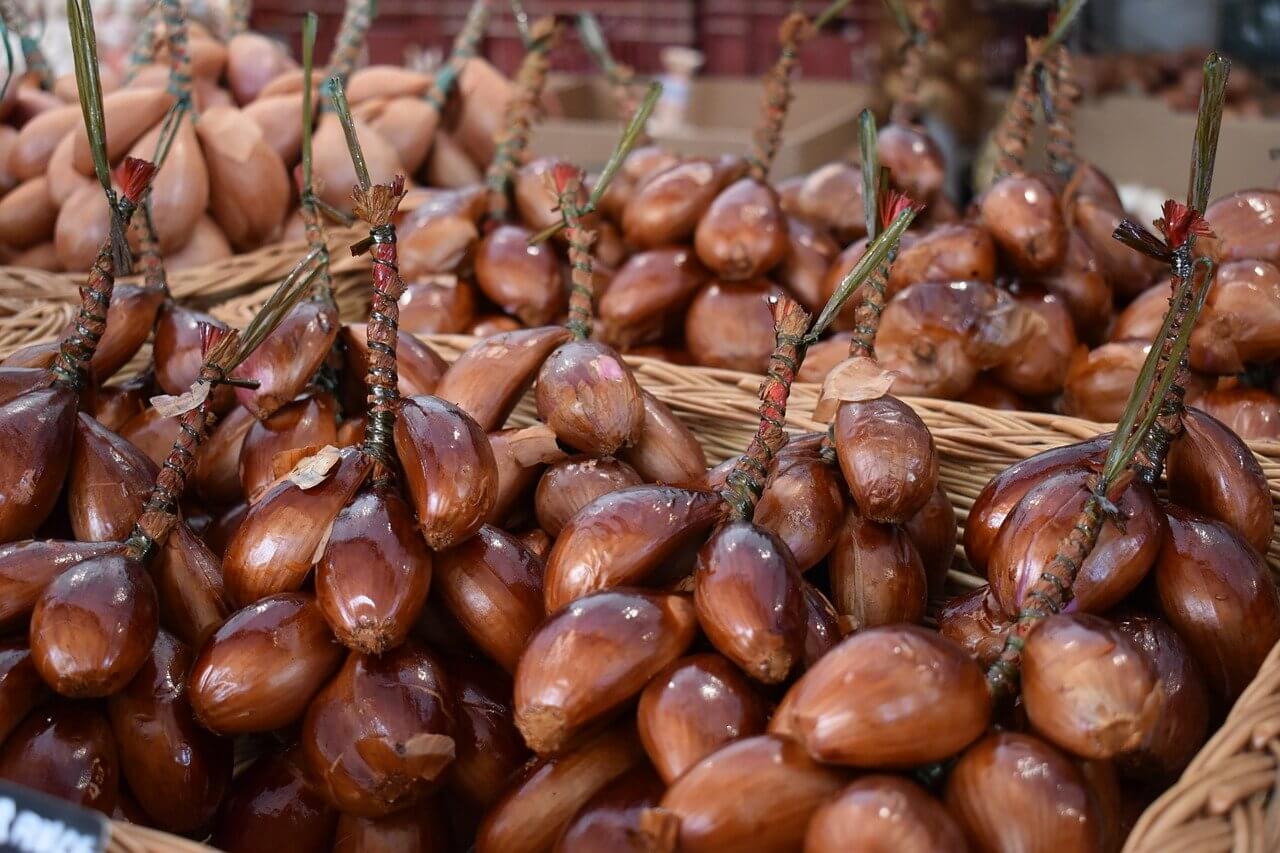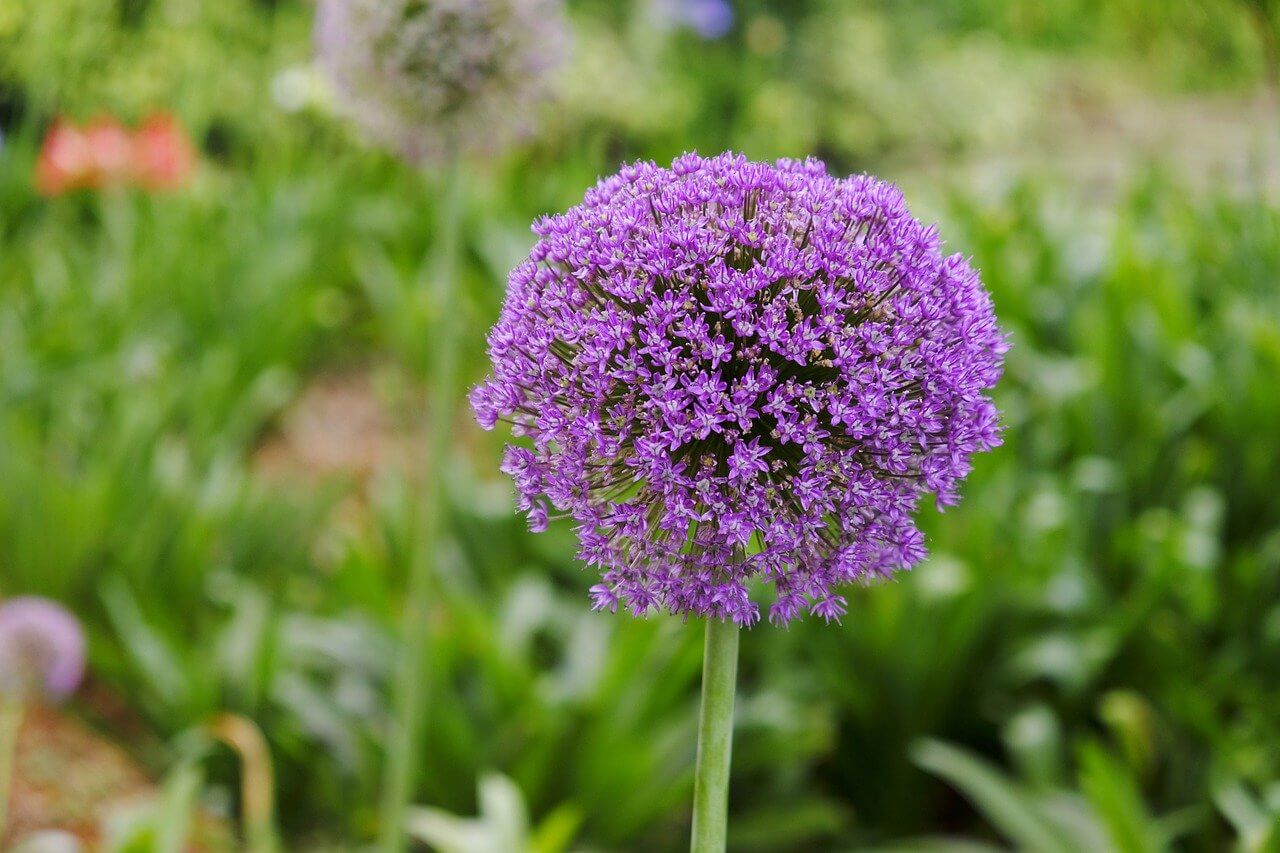Shallots are a great addition to any vegetable patch. Smaller, and considerably sweeter than the slightly harsh taste of a regular onion, they can be added to any dish as an onion substitute, or as part of the recipe in their own right. Shallots are a very rewarding crop to grow, as each bulb will produce at least four other onions – and there is a lot you can do with them. But how to grow shallots?
Let’s delve a little deeper into the world of this small onion.
What are shallots?

A shallot is a member of the onion (Allium) family, and also shares roots (excuse the pun!) with Leeks, Chives and Garlic. The shallot originated in Asia, and travelled the globe thereafter, because of its sweet taste, versatility and ease of storage.
Shallots grow in clusters – you plant one bulb and a multitude of new onions grow around it in a crown shape. Shallots are incredibly versatile; you can use them as an onion substitute in many dishes, and many recipes call for shallots by themselves.
They are also great as pickling onions, due to their small size and the fact that their delicate flavour doesn’t overwhelm the vinegar they are pickled in.
How to grow shallots

Growing shallots is very easy. You simply plant a few bulbs, then pretty much sit back and wait! As with any veg though, there are a few basic things that you need to consider:
A. What to plant
Shallots can be grown from seed, but this is a much harder way of getting a crop – and shallot seeds can be hard to get hold of.
Your best bet is to buy a “set” – ie a bag of bulbs – from a garden centre or vegetable distributor. These will grow quicker and will be less hassle – you don’t have to thin out seedlings or worry too much about pests if you go down this route.
B. When to plant
You can start your shallot sets from as early as mid November to as late as mid March. They can cope with variations in temperature better than some other veg, so don’t worry that they might get too cold – however if there is a prolonged cold snap, you might wish to put fleece or mulch around the soil to keep them warm.
C. How to plant
Push each bulb into the soil about 10 inches apart. Make sure you stick to the spacing – it may be tempting to squeeze more bulbs in, but they spread as they grow, and having them too close together can encourage disease.
You don’t want to push them too deep – shallots grow best if their tips are left exposed, with the soil firmed up around their bases.
When you first plant your shallots, you should cover them with fleece or some other type of mulch, because birds are very partial to a young onion, and may lift the sets and deprive you of your harvest.
This is a useful video that shows you the best way of planting your shallots:
D. Best soil for shallots
Shallots like a well worked soil, with plenty of manure to give nutrients to the growing plants.
You can add some well rotted manure or compost to your soil a couple of weeks before you plant your sets, to give them the best chance – also make sure that the soil is fine and soft, to give your shallots an easy way to spread their roots.
The soil should be free from weeds, and you should weed throughout the season, to prevent weeds from stealing the soil’s vital nutrients.
You can also plant your little onions straight into weed suppressing fabric, to give them the best chance (this will also reduce your need to weed, which is always a bonus!)
E. Water requirements
Shallots are fairly easy going, and won’t need to be watered every day by any means – but give them a good drink during prolonged dry spells, and try to water around the roots rather than from overhead. Too much water from above the plants can cause rot and mould, so keep your watering can low down.
F. Sunlight requirements
Shallots ideally like a full sun position in warm soil. They can grow happily in partial shade, but they do like to be warm. Shallots can be planted in Autumn or Spring, but they will need to be protected against frost and extreme cold weather with mulch or fleece.
Interestingly, despite their love of warm soil, a cold snap is essential for forming good bulbs, so don’t leave it too long after the ground starts to thaw before you plant your sets.
G. When to harvest
The best indicator of when your shallots are ready is their foliage. They sprout green tubular “leaves”, like onions do, and these are the best way to tell when your shallots are ready to come up.
When the leaves start to turn yellow and brown is when you should start to lift your shallots – this is usually around July or August, depending on how early or late they were planted and how the summer has been.
You will also be able to see the size of the bulbs, as the majority of a shallot is above the ground.
H. After harvesting
Shallots, like onions, need to dry out for a bit before they can be used. Once you have lifted the roots (do this using a fork, and digging gently around the roots until they have all been lifted), leave them lying out in a warm, dry place for a few days.
This will allow the flesh to dry a little, and the skin to turn to that characteristic papery feel that we all know so well. Shallots store very well, like onions, as long as you keep them in a cool dry place until you use them.
I. Common pests
Unlike many garden plants, shallots are not too susceptible to slugs and snails, because of their strong taste.
Instead, look out for onion white rot, which is caused by infected soil. It will rot the roots and wilt the foliage, and causes white fluffy fungus to appear. Remove and destroy any plants that have this disease, and you should avoid planting any onions in this site.
Onion downy mildew is another fungus that can attack shallots, and causes reduced yields by damaging the bulbs and foliage. You can remove affected leaves, and avoid the problem by ensuring that you plant the shallots sufficiently far apart, allowing plenty of light, and avoiding watering from overhead.
J. Growing shallots in containers
You can also grow shallots in containers, if you don’t have a lot of space. You can still harvest a great haul of these little onions to spice up your cooking, and it is an easy way to grow them. This video takes you through the steps:
Final words
Growing shallots is easy and fun, and it will reward you with a bumper harvest – as long as you follow a few simple steps. I hope you now feel confident with how to grow shallots, and that you enjoy your onion growing career!





